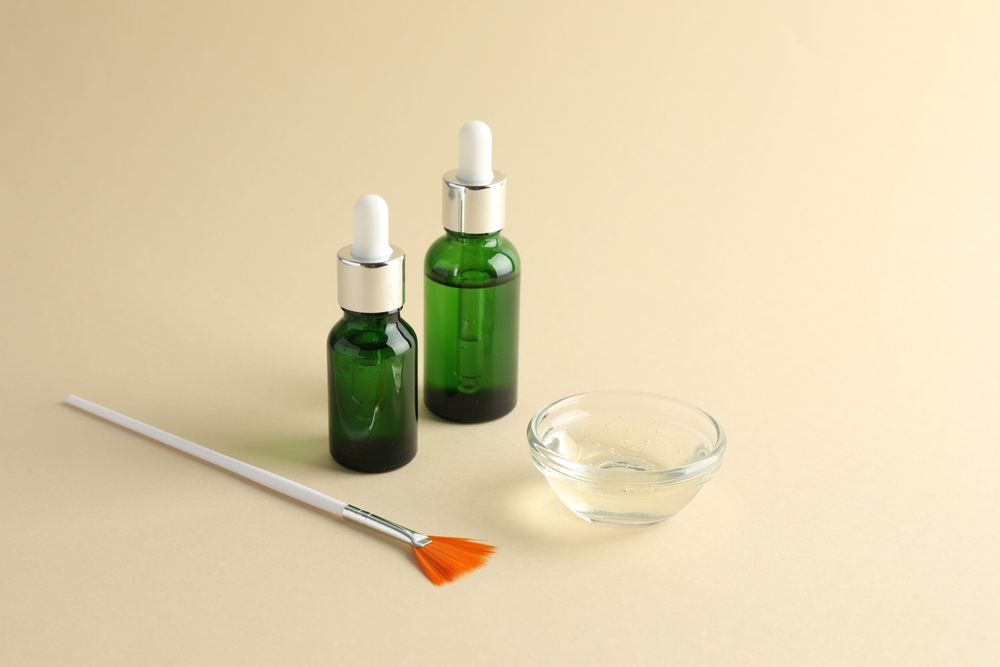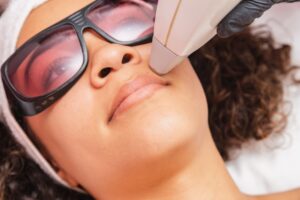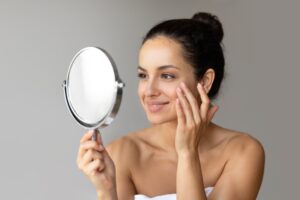Acne-prone skin can be challenging to manage, with frequent breakouts, uneven texture, and the scars that often linger long after the blemishes fade. If you’re struggling with these issues, chemical peels might be the solution you’ve been searching for. At CanStrive MedSpa & Wellness Clinic in Mississauga, ON, we offer chemical peels specifically designed to treat acne-prone skin. In this blog, we’ll explore how chemical peels work, their benefits, and what you can expect from the treatment.
Understanding Chemical Peels
Chemical peels are a popular cosmetic treatment that involves applying a chemical solution to the skin, causing the top layers to exfoliate and eventually peel off. This process reveals a new, smoother layer of skin underneath, which can improve the texture, tone, and overall appearance of your complexion.
For acne-prone skin, chemical peels are particularly beneficial because they not only target active breakouts but also help to reduce the appearance of acne scars and prevent future blemishes. The key to the effectiveness of chemical peels lies in the specific acids used in the treatment, each chosen to address different skin concerns.
How Chemical Peels Work for Acne-Prone Skin
The primary goal of a chemical peel for acne-prone skin is to exfoliate the outer layers of the skin, removing dead skin cells, excess oil, and other impurities that can clog pores and lead to breakouts. Here’s how it works:
- Exfoliation: The chemical solution applied during a peel breaks down the bonds between dead skin cells, allowing them to shed more easily. This exfoliation process helps to unclog pores and remove the debris that often leads to acne.
- Oil Control: Certain types of acids used in chemical peels, such as salicylic acid, are oil-soluble, meaning they can penetrate deep into the pores to dissolve excess sebum. By controlling oil production, these peels can significantly reduce the frequency and severity of breakouts.
- Anti-Inflammatory Effects: Many chemical peels also have anti-inflammatory properties, which help to calm irritated skin and reduce the redness and swelling associated with acne. This makes them an excellent option for those dealing with inflamed or cystic acne.
- Collagen Stimulation: In addition to treating acne, chemical peels can stimulate collagen production, which is essential for healing acne scars and improving skin texture. By encouraging the growth of new, healthy skin cells, chemical peels can reduce the appearance of post-acne marks and give your skin a smoother, more even tone.
Types of Chemical Peels for Acne-Prone Skin
There are several types of chemical peels available, each varying in strength and purpose. The right peel for you will depend on your skin type, the severity of your acne, and your specific skincare goals. At CanStrive MedSpa & Wellness Clinic, we offer a range of peels tailored to different needs:
- Salicylic Acid Peels: Salicylic acid is a beta hydroxy acid (BHA) known for its ability to penetrate deep into the pores and dissolve oil and debris. It’s particularly effective for treating blackheads, whiteheads, and inflamed acne. Salicylic acid peels also have anti-inflammatory properties, making them ideal for reducing redness and irritation.
- Glycolic Acid Peels: Glycolic acid is an alpha hydroxy acid (AHA) derived from sugar cane. It’s known for its ability to exfoliate the skin’s surface and promote cell turnover. Glycolic acid peels are effective for treating mild to moderate acne, improving skin texture, and fading post-inflammatory hyperpigmentation (dark spots left by acne).
- Lactic Acid Peels: Lactic acid, another AHA, is gentler than glycolic acid and is often recommended for those with sensitive or dry acne-prone skin. Lactic acid peels help to exfoliate the skin, improve hydration, and reduce the appearance of acne scars without causing irritation.
- TCA Peels: Trichloroacetic acid (TCA) peels are stronger and penetrate deeper into the skin. They are typically used for more severe acne and for reducing the appearance of deep acne scars. TCA peels require more downtime for recovery but offer more dramatic results.
What to Expect During and After a Chemical Peel
If you’re considering a chemical peel for your acne-prone skin, it’s important to know what to expect during the treatment and afterward. Here’s a brief overview of the process:
- Consultation: Your treatment journey begins with a consultation at CanStrive MedSpa & Wellness Clinic, where our experienced skincare professionals will assess your skin and discuss your goals. Based on this assessment, we’ll recommend the type of peel that’s best suited to your needs.
- Treatment: On the day of your peel, your skin will be cleansed, and the chemical solution will be applied to the treatment area. You may feel a tingling or mild burning sensation as the solution works on your skin. The duration of the peel depends on the strength of the acid used and your skin’s sensitivity.
- Aftercare: After the peel, your skin may be red and sensitive, similar to a sunburn. As the outer layers of your skin begin to peel away, you may experience some flaking or dryness. It’s crucial to follow the aftercare instructions provided by your skincare professional, which will typically include avoiding sun exposure, using gentle cleansers, and applying a moisturizer to keep your skin hydrated.
- Results: As your skin heals, you’ll begin to notice improvements in texture, tone, and clarity. The full results of your chemical peel will become more apparent in the weeks following the treatment, with continued improvements over time.
Maintaining Your Results: A Path to Clearer Skin
While chemical peels can significantly improve acne-prone skin, maintaining your results requires an ongoing commitment to proper skincare. Incorporating products with salicylic acid, retinoids, and gentle exfoliants into your daily routine can help prevent future breakouts and keep your skin looking clear and healthy.
At CanStrive MedSpa & Wellness Clinic, we offer a variety of skincare products that complement our in-office treatments. Our team can guide you in choosing the right products to support your skin’s needs and prolong the benefits of your chemical peel.
Sources:
- Taylor, S. C., & Cook-Bolden, F. (2019). Chemical Peels in the Treatment of Acne: Clinical Efficacy and Safety. Journal of Clinical and Aesthetic Dermatology.
- Berson, D. S., & Chalker, D. K. (2018). The Role of Chemical Peels in Acne Management. American Journal of Clinical Dermatology.
- Tung, R. C., & Rubin, M. G. (2020). Advances in Chemical Peeling for Acne-Prone Skin. Dermatologic Surgery.




